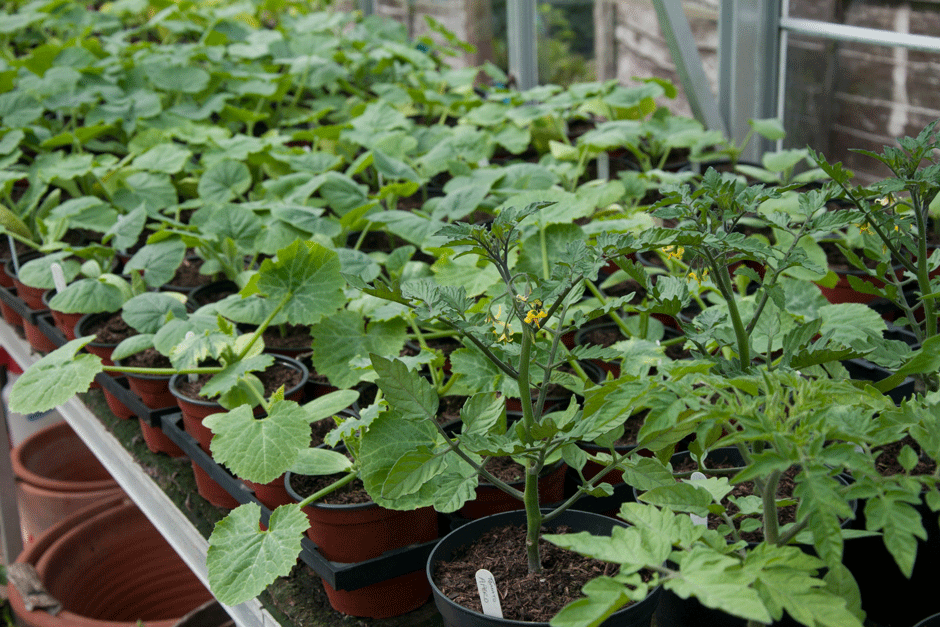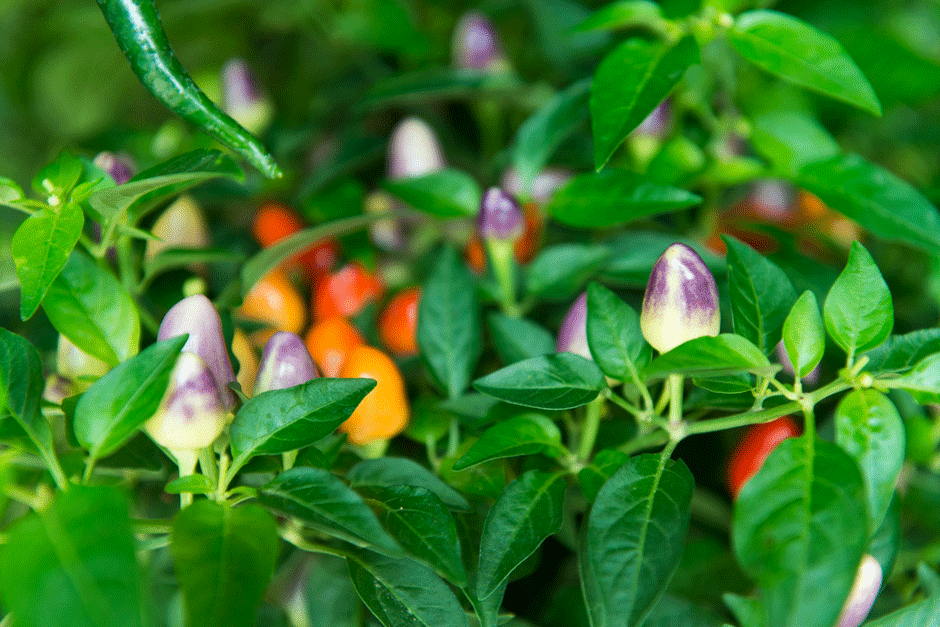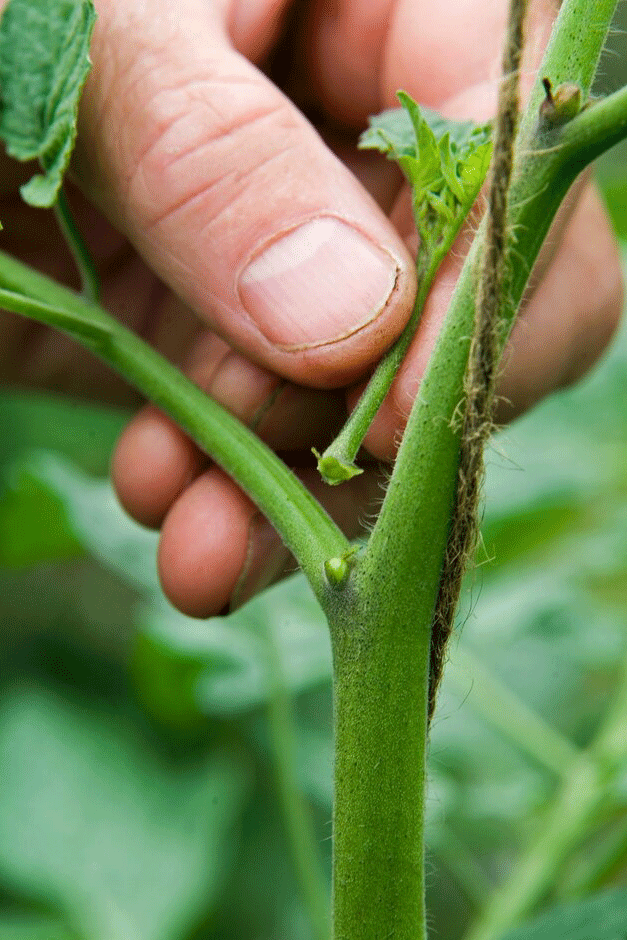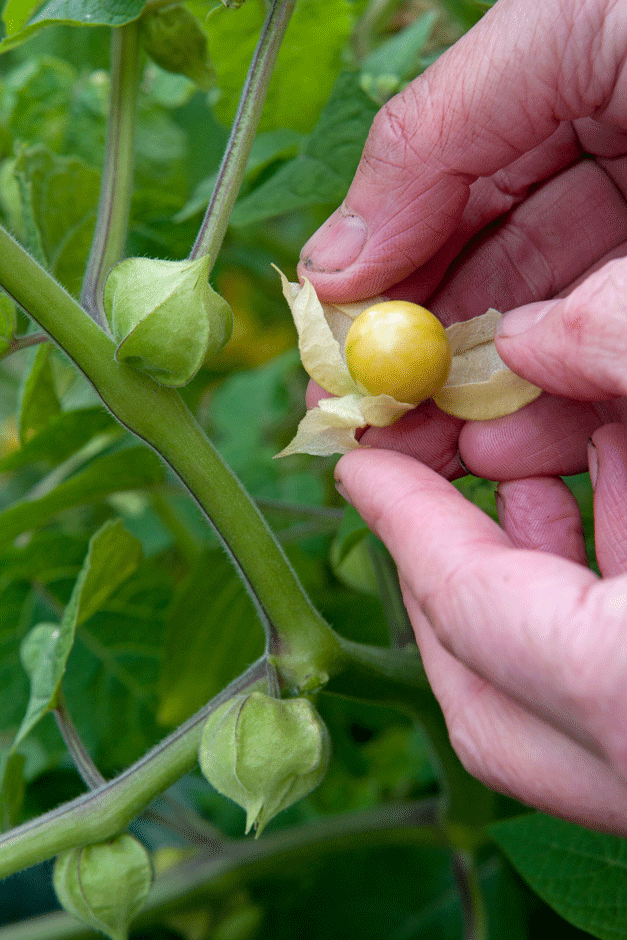RHS Horticultural Advisor Lenka Cooke shares tips on planting out, and her favourite veg to grow in the greenhouse. Plus, a tried-and-tested family recipe for marrow pickle!

 I am lucky enough to have a greenhouse, so for me, the end of May is when I start a major reshuffle – planting out my tender vegetables. On the move are those on crowded windowsills indoors or squeezed into the greenhouse, where they’re forced to share space with tender ornamentals.
I am lucky enough to have a greenhouse, so for me, the end of May is when I start a major reshuffle – planting out my tender vegetables. On the move are those on crowded windowsills indoors or squeezed into the greenhouse, where they’re forced to share space with tender ornamentals.
To make space in the greenhouse, I start by planting out veg that has been hardened off. I’ve tried to cut corners before but had consequences. The problem is not only cool night temperatures, but also exposure to strong sunshine. Plant out during sunny weather and the sudden exposure scorches the leaves, sometimes completely bleaching them. So my advice when moving things outdoors, like veg or citrus, is that planting on overcast days is better.
Climbing beans
I start by planting climbing French beans. I grow flat-podded cultivars such as ‘Helda’ or ‘Hunter’ AGM. Despite inserting short sticks to climb on, the stems of module-raised plants are already starting to tangle (needing saintly patience to unbind them). However, don’t worry if some of the shoot tips snap during this process – so long as there are pairs of true leaves lower down, they’ll continue growing.
If you grew runner beans last year, you may find they’re popping up again from fleshy underground tubers. Runner beans are tender perennials, but their roots (like dahlias) can overwinter. Put up some support and they’ll still give you a decent crop.
Squash and marrows
I grow winter squash with thicker skins that store well. My favourites are ‘Crown Prince’ and ‘Uchiki Kuri’ (‘Red Kuri’). I love them roasted or added to stews and soups. The only downside is they take up a lot of space. My mother-in-law always planted marrow on her compost heap. Fortunately, my bins are in a sunny spot, so I decided to test this method. Removing the top unrotted layer, I planted directly into the dark crumbly stuff. The squashes grew very well, taking advantage of the fence to climb on.
Though not keen on courgettes or marrows myself, I always plant one to make marrow pickle for my husband. One plant is enough, and I choose something ornamental like ‘Tiger Cross’ AGM for its attractive pale green stripes. The recipe was passed down over several generations in his family and I am happy to share it with you!
Marrow pickle recipe
Ingredients
1 large marrow, giving 4lb of cubes
1½ oz (43g) mustard powder
1¼ lb (35g) sugar
12 chillies
2½–3 pints (1.4-1.7l) vinegar
½ oz (14g) powdered ginger
½ oz (14g) powdered turmeric
1 lb (454g) shallots, minced
12 cloves
Method
Peel and cut the marrow into 1” cubes – there should be 4 lb of marrow. Sprinkle with salt and let it stand overnight, then drain off the water. Mix the ginger, mustard and turmeric to a paste with a little vinegar. Bring the sugar, finely minced onions, chillies and remaining vinegar to boiling point. Add the spice paste and the cloves, wrapped in muslin so that they can be later removed. Mix well, then add the marrow and cook until tender.
Planting cucurbits
 When planting cucurbits (including cucumbers, melons, squashes and courgettes), avoid damaging the vulnerable stem base. Damage by slugs/snails, keeping compost too wet or rough handling risks disease entry, which can cause the whole plant to collapse.
When planting cucurbits (including cucumbers, melons, squashes and courgettes), avoid damaging the vulnerable stem base. Damage by slugs/snails, keeping compost too wet or rough handling risks disease entry, which can cause the whole plant to collapse.
Also avoid planting deeply – keep the rootball either at the same level that it was at in the pot, or slightly proud of the surrounding compost. This ensures water won’t collect around the base of the stems and rot them. Firm the soil gently to promote good rooting. If mulching, leave a good gap around the base of the stem.
Peppers and chillies
I grow my sweet (bell) peppers and chillies in pots on the greenhouse staging. Compared to tomatoes they are slow-growing, so sow them early in February to early March. By May they should be ready to pot on into two or three litre pots. They enjoy good drainage, so I mix sharp sand or perlite into peat-free compost. Chillies branch naturally, so pinching out growing tips is rarely needed. Give individuals plenty of space, as overcrowding creates humidity and problems with fruit rotting due to botrytis (grey mould).

Chillies can make attractive and productive alternatives to traditional bedding or windowsill houseplants. Use cultivars with variegated leaves and colourful fruit such as ‘Caliko’, ‘Fairy Lights’ and ‘Bolivia Rainbow’. I’ve tried many cultivars, including the extremely hot ‘Dorset Naga’. Since you don’t need many for a fiery dish, you can freeze or dry any surplus for later use. I also recommend wearing gloves when chopping them, as the irritating juice persists on skin for quite some time!
Supporting plants in the greenhouse
While bamboo canes or hazel poles work, I prefer using strings attached to the greenhouse roof for tall veg like melons, cucumbers and cordon tomatoes. I make a loop of string loosely tied around the stem base, then tuck the tail end beneath the growbag to fix it in position. Strings should be slightly slack, as the weight of the stem will pull it taught as you twine it round.
Cucumbers
My family loves mini cucumbers, often picked straight from the plant as a quick snack. There’s one main stem (cordon), but I let one or two develop on the side shoots before pinching the rest back. Most indoor cucumbers are female, but stressed plants can produce male flowers (without a swelling behind). Remove these to prevent cross pollination, which causes fruit to be bitter.
On hot sunny days, increase ventilation and water plants often. Pick the cucumbers regularly to preventing them from becoming tough. Too many fruit can also stress the plant, with new cucumbers failing to form. Try cultivars ‘Mini Munch’ AGM, ‘Merlin’ or ‘Beth Alpha’.
Tomatoes
Wait for the first flower to open before planting tomatoes, since those planted out before can grow very tall before they begin flowering. They can also be planted slightly deeper, burying the stem if leggy (tall and thin). As they grow, remove side shoots on single stem (cordon) tomatoes when they appear.
planting tomatoes, since those planted out before can grow very tall before they begin flowering. They can also be planted slightly deeper, burying the stem if leggy (tall and thin). As they grow, remove side shoots on single stem (cordon) tomatoes when they appear.
Apart from my family favourites, including AGM cherry tomatoes ‘Sungold’ and ‘Sakura’ and AGM plum ‘Olivade’, I always try at least one new cultivar. ‘Zlatava’ produces medium-sized orange fruit with red flesh, while ‘Indigo Rose’ has an unusual purple colour and red flesh.
Physalis
I love the sharp tangy fruit of Cape

gooseberry (
Physalis peruviana), so I make sure to find greenhouse space for at least one plant. They’re quite tall (reaching 1.5m), and need a long growing season.
If you didn’t sow any in February/March, buy young plants in garden centres or online. I plant one per 4-5 litre pot and pinch out the growing tip to encourage branching. You can also grow them in a sunny spot outdoors. Try overwintering the plant in a sheltered place, since they are perennial.
 Pick of the crop
Pick of the crop
Look for the RHS Award of Garden Merit (AGM) when buying vegetable seed or small plants. You can also download the RHS lists of recommended cultivars.
You may also be interested in...
About the author – Lenka Cooke
I am an RHS Horticultural Advisor – part of the team who answers members’ questions. I also write our fruit and vegetable growing webpages. I am a self-confessed gardening addict; growing fruit, vegetables, greenhouse crops, as well as ornamentals and houseplants at home.

